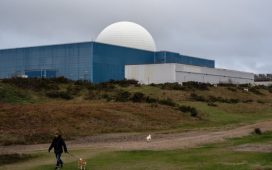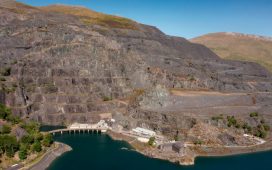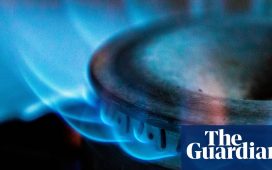The UK has broken its record for wind power generation, as blustery conditions and a growing number of turbines enable renewable energy sources to provide more than half the country’s electricity.
National Grid Electricity System Operator on Wednesday said the country had generated record wind-powered electricity at one point on Tuesday, with provisional data showing a “max wind generation record” exceeding 21.6 gigawatts. UK demand on Wednesday lunchtime was about 35GW.
Strong wind speeds in recent weeks have helped cut the UK’s reliance on natural gas for electricity generation and contributed to a fall in gas prices, which are now close to their pre-Ukraine war level.
Prices remain, however, about four times higher than the average price between 2010 and 2019, owing to Russia’s efforts to squeeze supplies to Europe prior to and during the invasion.
But wind has consistently made up 46-59 per cent of all UK electricity generation during the past week, according to National Grid ESO data. That dropped below 30 per cent on just one of the past 11 days.
By comparison, over the past week fossil fuels, natural gas and coal have together provided less than 15 per cent of UK electricity generation, compared with an average during the past year of 43 per cent.
On Wednesday lunchtime, gas and coal were providing just 6 per cent of all UK electricity, with gas generating 1.9GW and coal 0.5GW. Wind was producing 21.13GW or 53 per cent.
The balance was made up by nuclear, hydropower, solar and biomass alongside strong imports from continental Europe. Its electricity crisis has eased slightly as French nuclear generators, which operated well below capacity for much of 2022, start to come back online following maintenance.
The high volume of low carbon generation in the UK, and the low volume of fossil fuels, provide a test for a grid designed to function with much higher levels of fossil generation.
Spinning turbines powered by coal or gas help add inertia to the grid, which is important for maintaining frequency should a large power provider suddenly trip offline.
But National Grid has been working towards boosting “green” inertia on the grid and aims to be able to run a “zero carbon” grid by 2025, including through fossil-free turbines.
Julian Leslie, head of networks at National Grid ESO, said in March last year that the UK had the “fastest decarbonising electricity network in the world” and that the operator “was the first to be solving” the challenge of inertia on a greener grid.
UK wind capacity is forecast to grow substantially between now and 2030 from about 25GW of installed capacity to more than 60GW, and the country is expected to become a larger exporter on windy days.
But gas is still used to heat the vast majority of UK homes, which analysts see as a significant challenge to the decarbonisation of domestic heating.
On still days gas demand also rises to replace wind generation. Wind generated less than 4 per cent of UK electricity on December 12 while gas produced 62.1 per cent, according to National Grid ESO.









